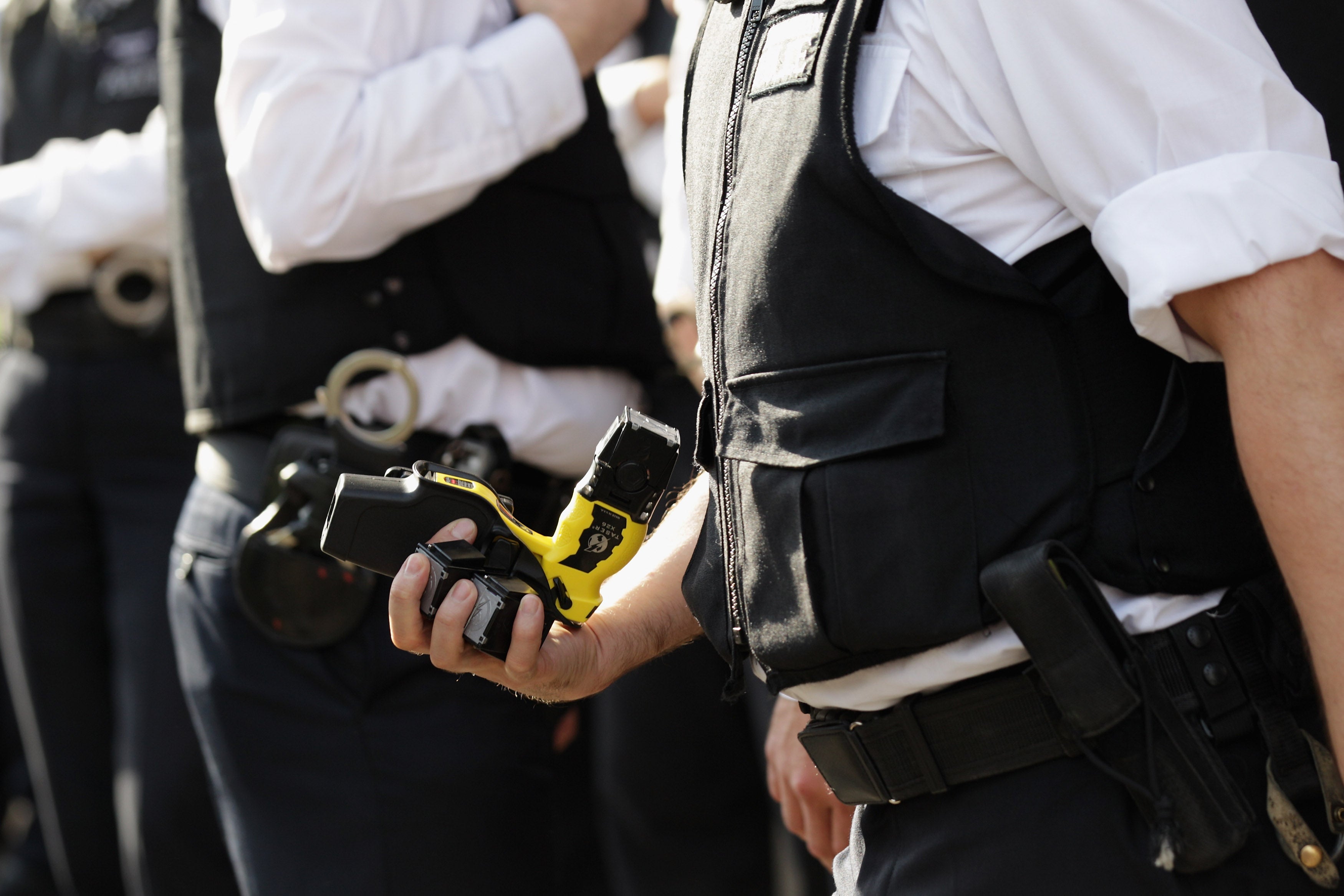New training needed for police after children and mentally ill people Tasered, watchdog warns
Police suspected people, including three who died, were ‘feigning being unwell’

Police must be trained to use Tasers only when “absolutely necessary”, a watchdog has said after a review found the weapons were being used against children and mentally ill people.
The Independent Office for Police Conduct (IOPC) reviewed around 100 of the most serious cases involving Tasers in England and Wales, including 16 where people died.
Inquests found that the use of Taser contributed to four of those deaths and inquiries are ongoing in others, including the killing of former footballer Dalian Atkinson by PC Benjamin Monk.
Last year, a coroner who examined the death of 30-year-old father Marc Cole warned that “future deaths will occur unless action is taken”, but the Home Office rejected his call for a review of the physical effects of Tasers.
The IOPC said they had been used on people with underlying health problems, including epilepsy and heart conditions, and that in some cases – including three where people died – officers had suspected they were “feigning being unwell”.
A report published on Wednesday also raised concerns about the “increasing use of Tasers on children and vulnerable people with mental health, drug and alcohol issues”.
The review warned that police had used the weapons in unsafe locations not always considered the “risk of injury” properly.
In a quarter of the cases examined, Tasers had been wrongly used to make people “comply with instructions”, and in a third officers had missed opportunities to de-escalate situations.
The IOPC said that current Taser use was threatening public trust in the police, especially over the disproportionate use against Black men.
The report comes after the government gave police forces £10m to issue thousands more officers with Tasers.
IOPC director general Michael Lockwood said: “Tasers are available to more officers than ever before, but oengagement with communities has highlighted a stark difference between their expectations about when a Taser should be used, and the situations in which Taser can be used under current national guidance, particularly on those who are vulnerable.
“Police forces must be able to explain this clearly or risk further eroding public confidence.”

Mr Lockwood said that although Tasers were a valuable tool for protecting both the public and police officers, independent scrutiny must ensure they are used appropriately.
“Clearer national guidance on the circumstances in which Taser should and should not be used and better training will improve officer safety, as well as give the public reassurance that Taser is being used only when absolutely necessary,” he added.
“Police forces must be able to justify to the public the circumstances in which Taser is deployed, particularly when children and vulnerable people are involved. Forces must also respond to the disproportionate use of Tasers against Black people.”
The IOPC made 17 recommendations, including improvements to police guidance and training, the scrutiny and monitoring of Taser use and data and research.
The Inquest charity said they do not go far enough and called for “systemic change”, saying Tasers were dangerous weapons that had resulted in serious injury and death.
“They are increasingly used as a first not last resort,” added director Deborah Coles. “Ultimately to prevent further deaths and harm, we must look beyond policing and redirect resources into community, health, welfare and specialist services.”

The National Police Chiefs’ Council (NPCC) and the College of Policing announced research on racial disproportionality in police use of Taser last year.
A National Taser Stakeholder Advisory Group in this area has also been set up, and there are new conflict management guidelines and training proposals.
The NPCC said the IOPC’s review only covered 0.1 per cent of all Taser use, because so few cases had been referred to the watchdog.
Home Office figures record Taser use if the weapons are drawn, used to plant a red target dot on a suspect, or fired. In 86 per cent of recorded Taser incidents, they are not fired.
Chief Constable Lucy D’Orsi, the national police lead on Tasers, said work was already underway to make improvements.
“Focusing on these smaller number of cases missed an opportunity to consider Taser use more broadly and unfortunately has resulted in recommendations which are mostly out of date and not based on the realities of policing,” she added.
“Policing is not easy and in many violent situations I believe Taser is a viable less lethal option for officers between using a baton and the lethal force of a gun. Taser has a critical place in protecting the public and our officers.”
The IOPC said it could only investigate “the most serious and sensitive cases” because of its remit, and aimed to contribute to the growing evidence base around Taser use.
The Association of Police and Crime Commissioners said it would act as a bridge between police forces and the public to ensure concerns were addressed.
Join our commenting forum
Join thought-provoking conversations, follow other Independent readers and see their replies
Comments




Bookmark popover
Removed from bookmarks